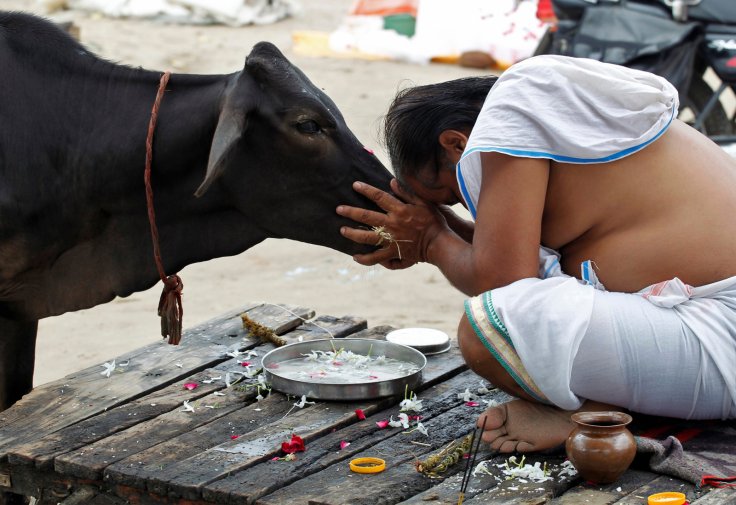
A statue of a Hindu cow deity with a missing head has been found in Central Java province of Indonesia by the residents of Siwal village in Sukoharjo regency bringing to fore the ancient religious tradition prevalent in the region.
According to The Jakarta Post, the ancient sculpture belonged to Mataram era, when the Medang or Mataram Kingdom flourished along with the Javanese Hindu–Buddhist religion between 8th and 10th centuries, before the Dutch colonization.
A local resident named Walidi accidentally discovered the statue while he was digging holes in the ground to plant banana trees. He said that when the sculpture was found, he called his neighbors to move it. The statue is one meter long, 45 cm wide and 60 cm tall.
Bimo Kokor Wijanarko, a cultural heritage analyst confirmed that the statue belongs to the Mataram era and said that it is a replica of a sacred animal, believed to be the carriage of Shiva called Lembu Andini.
Bimo also believes that the 300 to 400-year-old sculpture was stolen before it was buried, as it was discovered without the head.
"A lot of animal-shaped ancient relics were found headless. Maybe this is because the heads of statues are very valuable," he further added.
After the finding, the Siwal village secretary Yusuf recalled that a few years ago, a group of artefact collectors came to look for the sculpture in their area. They and other organizations proceeded with the excavation in every possible area of the village and dug it up to search for the statue. But no one succeeded until Monday when the relic was finally discovered.
Yusuf confirmed that they will coordinate with "village chief and relevant institutions for the handling of this ancient object."
Siti Laila, Sukoharjo Culture and Tourism Agency head told the local media that the discovered ancient structure has been registered in the Yogyakarta Cultural Heritage Preservation Agency.









